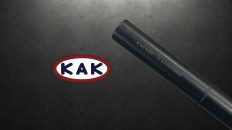Unleash the full potential of your AR-15 rifle with a deep dive into the function and benefits of its indispensable component – the barrel. In this ultimate guide, we’ll shed light on everything you need to know about AR-15 barrels, from their construction materials and lengths to the impact they have on accuracy and recoil management. Understanding the barrel, alongside other crucial parts like the upper receiver, can significantly enhance your shooting experience.
Whether you are a seasoned shooter or a proud AR-15 owner, understanding the intricacies of the barrel can significantly enhance your shooting experience. From the precision-machined rifling patterns that stabilize the bullet’s trajectory to the different gas systems that regulate the cycling of the firearm, each aspect plays a vital role in the barrel’s overall performance.
Join us as we demystify the world of AR-15 barrels, providing you with the knowledge to make informed choices when upgrading, optimizing, or customizing your rifle. Explore the benefits of stainless steel barrels, lightweight options, and various barrel lengths to find the perfect fit for your shooting style and objectives. Stay ahead of the curve and unlock the true potential of your AR-15 with our comprehensive guide to understanding the function and benefits of its barrel.
Importance of the AR-15 barrel in firearm performance
The barrel of an AR-15 rifle is a critical AR-15 component that directly impacts the overall performance and accuracy of the firearm. As the conduit through which the bullet travels, the barrel plays a crucial role in determining the trajectory, velocity, and precision of the projectile.
Precision-engineered rifling patterns within the barrel impart a stabilizing spin on the bullet, ensuring a straighter and more consistent flight path. The barrel’s length, material, and design also influence factors such as muzzle velocity, recoil management, and gas system functionality – all of which contribute to the rifle’s reliability, accuracy, and overall shooting experience.
Neglecting the importance of the AR-15 barrel can lead to suboptimal performance, reduced accuracy, and even potential safety issues. Understanding the role of the barrel in the AR-15 platform is essential for owners and enthusiasts who seek to maximize the potential of their rifles, whether for target shooting, hunting, or self-defense applications. By diving into the intricacies of the barrel, shooters can make informed decisions about upgrades, modifications, and maintenance to enhance the overall effectiveness of their AR-15 rifles.
Different types of AR-15 barrels
The AR-15 platform offers a wide range of barrel options, each with its own unique characteristics and intended applications. From the standard 16-inch carbine barrel to the longer, precision-oriented 20-inch variants, the choice of barrel can significantly impact the performance and handling of the rifle.
One of the primary factors that distinguish AR-15 barrels is the material used in their construction. Stainless steel barrels, for example, are known for their durability, corrosion resistance, and ability to maintain accuracy over extended use. In contrast, chrome-lined barrels offer enhanced protection against wear and tear, making them a popular choice for high-volume shooting or military/law enforcement applications.
Additionally, AR-15 barrels can be categorized by their gas system, which regulates the cycling of the action. Common gas system configurations include direct impingement, piston-driven, and mid-length, each with its own advantages and trade-offs in terms of recoil management, reliability, and maintenance requirements. Understanding the nuances of these gas systems can help shooters select the barrel that best aligns with their specific needs and preferences.
Factors to consider when choosing an AR-15 barrel
When selecting an AR-15 barrel, there are several key factors to consider to ensure the best fit for your shooting requirements and personal preferences.
Barrel length is a crucial aspect, as it directly impacts the velocity, trajectory, and overall handling characteristics of the rifle. Shorter barrels, such as the 16-inch carbine, offer enhanced maneuverability and portability, making them well-suited for close-quarters applications. Conversely, longer barrels, like the 20-inch variants, can provide increased muzzle velocity and improved long-range accuracy, making them a popular choice for precision shooting and hunting.
Another important factor is the barrel’s twist rate, which refers to the number of times the rifling completes a full revolution per inch of barrel length. The twist rate directly influences the bullet’s stability and, consequently, the rifle’s accuracy. Choosing the appropriate twist rate for your preferred ammunition is essential to ensure optimal performance and consistency.
Benefits of a high-quality AR-15 barrel
Investing in a high-quality AR-15 barrel can provide a multitude of benefits that elevate the overall shooting experience and performance of the rifle.
Precision-engineered barrels, often crafted from premium materials like stainless steel or chrome-lined variants, offer superior accuracy and consistency. The meticulous manufacturing process and attention to detail in the rifling patterns ensure that the bullet’s trajectory is stabilized, resulting in tighter groups and improved long-range precision.
In addition to enhanced accuracy, a high-quality barrel can also contribute to improved recoil management and reduced muzzle rise. The barrel’s design, weight, and gas system configuration play a significant role in how the rifle handles during rapid fire or in demanding shooting scenarios. By mitigating excessive recoil and muzzle movement, a premium barrel can enhance the shooter’s control and confidence, leading to more accurate and efficient target engagement.
Proper maintenance and care for AR-15 barrels
Maintaining the health and longevity of an AR-15 barrel is crucial for ensuring optimal performance and reliability over the long term. Proper care and maintenance can extend the barrel’s lifespan, preserve its accuracy, and prevent premature wear or damage.
One of the essential steps in maintaining an AR-15 barrel is regular cleaning and inspection. Thoroughly cleaning the bore, using appropriate solvents and brushes, helps remove built-up carbon deposits, fouling, and residue that can accumulate from repeated firing. Inspecting the barrel for signs of wear, such as pitting or erosion, allows shooters to identify any potential issues and address them proactively.
Additionally, proper storage and handling of the barrel are crucial. Protecting the barrel from impact, corrosion, and environmental factors can help maintain its integrity and prevent damage that could compromise accuracy and reliability. Utilizing protective accessories, such as barrel covers or storage cases, can be an effective way to safeguard the barrel when the rifle is not in use.
Upgrades and modifications for AR-15 barrels
The versatility of the AR-15 platform allows for a wide range of upgrades and modifications to the barrel, enabling shooters to tailor their rifles to specific needs and preferences. From changing the barrel length to experimenting with different materials and gas system configurations, the options for customization are vast.
One popular upgrade for AR-15 owners is the installation of a lightweight or fluted barrel. These specialized barrels, often made from stainless steel or other lightweight alloys, can significantly reduce the overall weight of the rifle, improving handling and maneuverability without sacrificing accuracy or reliability. This can be particularly beneficial for shooters engaged in dynamic or tactical scenarios where rapid target engagement and mobility are prioritized.
Another common modification is the addition of a muzzle device, such as a compensator or suppressor. These accessories can help mitigate muzzle rise, reduce recoil, and enhance the shooter’s ability to stay on target during rapid fire. Additionally, the use of a suppressor can provide hearing protection and reduce the overall noise signature of the rifle, making it a valuable upgrade for both recreational and tactical applications.
Understanding barrel twist rate and its impact on accuracy
The barrel twist rate is a critical factor that directly influences the stability and accuracy of the bullet’s trajectory. This measurement, expressed as the number of rifling twists per inch (e.g., 1:7, 1:8, 1:9), determines the rate at which the barrel imparts a stabilizing spin on the projectile.
The optimal twist rate for an AR-15 barrel is largely dependent on the weight and design of the ammunition being used. Heavier bullets, typically in the range of 69-77 grains, tend to perform best with a faster twist rate, such as 1:7 or 1:8. These faster twist rates provide the necessary stabilization to keep the bullet on a consistent and accurate path, especially at longer ranges.
Conversely, lighter bullets, often in the 55-62 grain range, may perform better with a slower twist rate, such as 1:9. This allows the barrel to impart the appropriate amount of spin to stabilize the lighter projectile without over-stabilizing it, which can lead to erratic behavior and reduced accuracy.
Common misconceptions about AR-15 barrels
Despite the wealth of information available, there are still several common misconceptions surrounding AR-15 barrels that can lead to confusion and misinformation.
One prevalent misconception is that longer barrels inherently provide greater accuracy and velocity. While this may be true to a certain extent, the relationship between barrel length and performance is more nuanced. Factors such as the rifle’s gas system, ammunition selection, and shooter skill play a significant role in determining the optimal barrel length for a given application. In some cases, a shorter barrel may offer advantages in terms of maneuverability and recoil management without significantly compromising accuracy.
Another common misconception is that barrel material, such as stainless steel or chrome-lining, directly equates to higher quality or superior performance. While these materials do offer specific benefits, such as enhanced durability and corrosion resistance, the overall quality and precision of the barrel’s manufacturing process are more critical factors in determining its accuracy and reliability.
Conclusion: The AR-15 barrel as a crucial component in firearms
In conclusion, the AR-15 barrel is a crucial component that significantly impacts the overall performance, accuracy, and reliability of the firearm. By understanding the various types of barrels, the factors to consider when choosing one, and the benefits of a high-quality barrel, AR-15 owners and enthusiasts can make informed decisions to enhance the capabilities of their rifles.
From the precision-engineered rifling patterns that stabilize the bullet’s trajectory to the gas system configurations that regulate the cycling of the action, every aspect of the barrel plays a vital role in the shooting experience. Proper maintenance, care, and strategic upgrades can further optimize the barrel’s performance, ensuring that the AR-15 platform reaches its full potential.
Whether you are a seasoned shooter or a proud AR-15 owner, investing the time to understand the intricacies of the barrel can unlock the true capabilities of your rifle. By staying informed and making educated choices, you can elevate your shooting experience, improve your accuracy, and enhance the overall effectiveness of your AR-15 platform. Embrace the power and potential of the barrel, and unlock the full capabilities of your AR-15 rifle.





Add comment